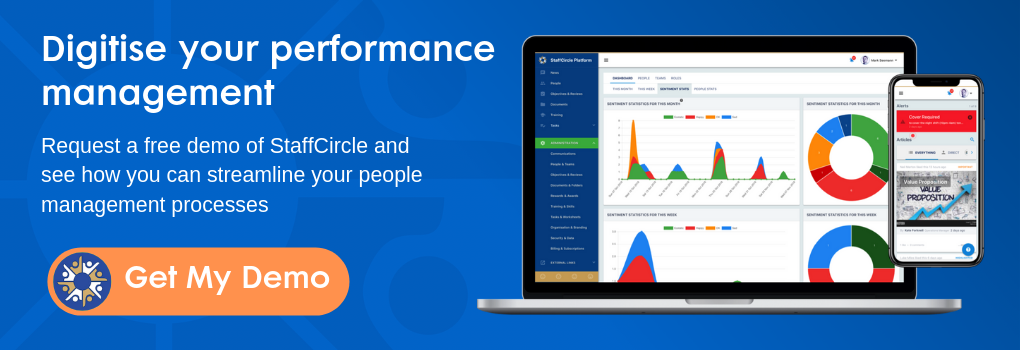We’ve said it before on this blog that the more frequently and clearly you give feedback to (and gather it from) your employees, the easier it will be to increase their performance.
And moving away from a paper system to a digital performance management system can make the whole process seem effortless. From the way you record, to how you monitor and then feedback: the hard work is done for you.
But now we’re going to take performance management a step even further by showing you how you can enable continuous feedback loops.
What are feedback loops?
The problem with annual performance reviews is that they’re so infrequent and badly facilitated that the lack of contact and communication between employee and manager in between sessions, can make the meeting awkward and totally ineffective.
Not only that but if the employee doesn’t feel they can express problems to their manager, they’ll find another outlet – possibly their colleagues – which can lead to gossip, disengagement and potentially sabotage or resignations. According to a survey by Gallup, managers alone account for 70% of the variance in employee engagement.
As a result, the annual appraisal fails in its purpose to address performance issues and instead puts a larger wedge between both parties, making that performance improvement goal harder to achieve.
A feedback loop is designed to improve communication between line manager and employee because it provides a platform for both parties to share insight, recommendations and concerns as frequently as they wish, safe in the knowledge that they are being listened to.
How it works is that you:
- give your employees a voice to express what’s on their mind
- capture their feedback quickly and accurately
- identify what is at the core of the problem
- find a sensible solution for it
- communicate to the employee how you’ll address the problem
- fix the problem and tell them.
That’s the feedback loop.
Done properly (I.e with the right technical support system) you can ensure that you stay on track with your commitment and your employee can see your progress in real-time too. This will show them that you’ve taken their feedback seriously and that the system works. They should then be more open with you going forward.
In fact, it’s very important that it’s not seen by employees as a one-time offer. Your staff need to know that they have regular and frequent opportunities to share feedback with you and know that they’ll be heard.
Any concerns they may have had about sharing before, perhaps because they didn’t believe you would do anything about it, that it seems trivial to mention given that you only meet once a year, or that you simply won’t care enough, will vanish. This establishes a culture of mutual trust and engagement and fosters a harder working environment.
What’s more, in doing this, you’ll gather a much clearer picture of your business and the potential risks it might face in the future, such as
- When people considering employment elsewhere
- If someone is out of their depth
- If someone isn’t being stretched enough
- If there are potentially damaging conditions in the workplace such as poor health and safety, mental health issues or bullying
You’ll also be able to encourage your employees to share their ideas on how to make your business better.

What’s a continuous feedback loop?
With continuous feedback, you’re not just saying to employees to find time in your diary to meet with you and share their thoughts; you’re giving them, and you, a way to share feedback and concerns at any time.
It’s almost like an ongoing conversation between you and your employee which takes place across a multitude of channels – although ideally still on one platform so that it is all collated, stored and analysed in one place.
As well as face to face meetings, you can use chat functions, email, tasks and worksheet notes, progress updates and more to share points of view.
And continuous feedback leads to continuous improvement as the process is made more transparent and the requirements of each employee to meet their goals are made clearer.
How does it work in practice?
The trick is having the right technical support system in place – a digital performance management platform. This will ensure that every communication is stored easily and you’re not giving your line managers extra work by having to scan through different tools to find crucial bits of information at the last minute.
In fact, with StaffCircle, which works across any device to ensure effective use by office-based and non-desk based workers, every employee has:
- visibility of their own objectives and performance dashboard
- access to an easy, quick and consistent review process where they can request check-ins or feedback at any time
- access to reward options such as the company’s points based awards system
- an array of communication tools
For the line manager, because they can access all the feedback quickly and easily, they won’t lose track of commitments they’ve made to employees.
Continuous feedback loops will transform your business so don’t waste any time in getting the right performance management system in place to make it happen.






